Thai massage is a deeply restorative gift that helps loved ones release tension, improve flexibility, and reconnect with their bodies. Unlike typical gifts, it offers lasting relief and emotional peace.
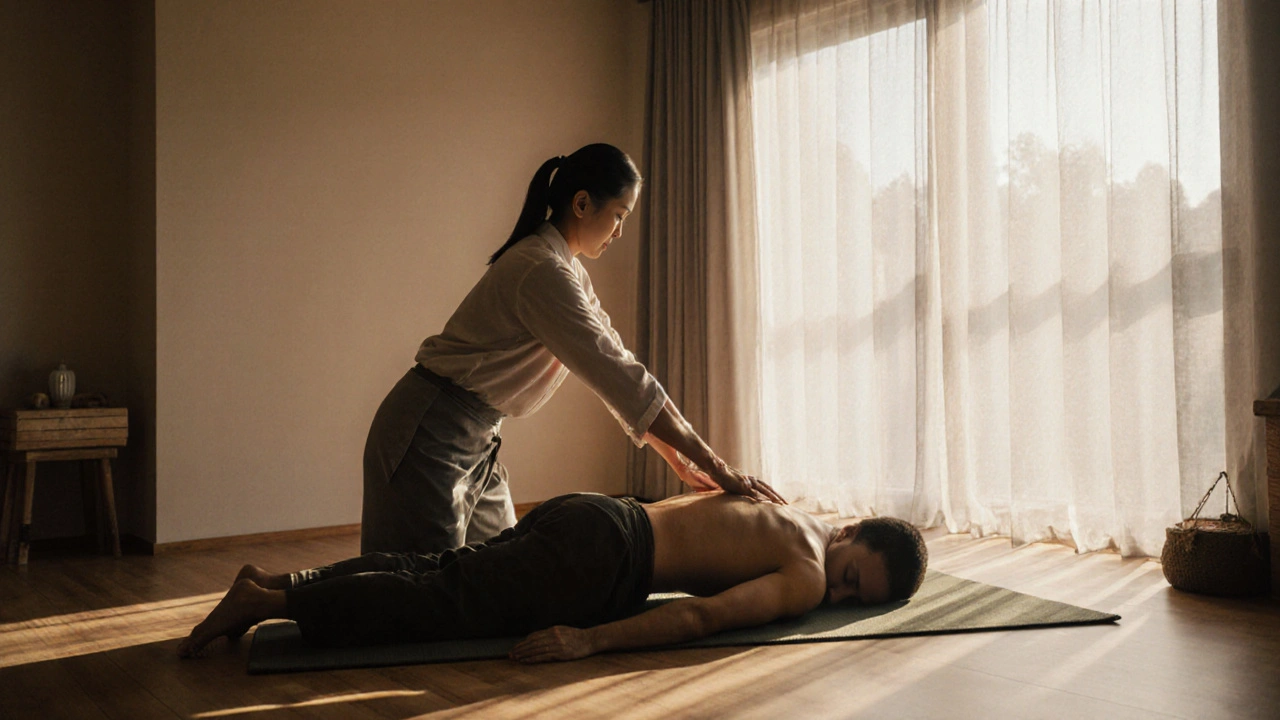
- Created by: Archer Caldwell
- Completed on: 31 Oct 2025
- Categories: Thai Massage
You’ve been there-staring at a shelf of scented candles, another pair of cozy socks, or yet another gift card that never gets used. You want to give something meaningful, something that doesn’t just sit on a table but actually changes how someone feels. That’s where Thai massage comes in.
Why Thai Massage Stands Out as a Gift
Think about the people you care about. Maybe they’re always on the go-juggling work, kids, errands. Or maybe they’re the quiet type, never asking for help, always putting everyone else first. What do they really need? Not more stuff. They need to be felt. To be held, in a way that doesn’t require words. Thai massage isn’t just a treatment. It’s a full-body experience that blends acupressure, assisted yoga stretches, and deep rhythmic compression. It’s not like a Swedish massage where you lie still and relax. With Thai massage, you’re gently moved through poses, your muscles are pressed along energy lines, and your body is realigned-not by force, but by patience and touch. Give someone Thai massage, and you’re giving them permission to truly let go. No screens. No obligations. Just stillness, breath, and someone else’s hands guiding them back to themselves.What Exactly Is Thai Massage?
Thai massage, also called Nuad Boran, comes from ancient healing traditions in Thailand, dating back over 2,500 years. It’s rooted in Ayurvedic principles and Buddhist meditation practices. Unlike Western massages that focus mostly on muscles, Thai massage works on the body’s energy lines-called sen lines-similar to acupuncture meridians. The recipient stays fully clothed, usually in loose, comfortable clothing. The practitioner uses their hands, thumbs, elbows, knees, and even feet to apply pressure and guide the body through a series of stretches. It’s like yoga, but you don’t have to do any of the work. You just breathe. It’s not a light touch. It’s deep. But it’s never painful-if done right. A skilled therapist adjusts pressure based on your comfort. You might feel a deep release in your shoulders, a surprising stretch in your hips, or a sudden warmth spreading through your back. It’s not magic. But it feels like it.How Thai Massage Helps Real People
Let’s talk about real life. Sarah, 42, works as a nurse. She’s on her feet 12 hours a day. Her lower back aches constantly. She tried foam rollers, heating pads, even physical therapy. Nothing stuck. Then her partner booked her a Thai massage for her birthday. After one session, she said, “I felt like someone had unplugged a battery I didn’t know was drained.” Two weeks later, she’s sleeping through the night. Mark, 58, sits at a desk all day. His neck is stiff, his shoulders are tight, and he’s started getting headaches. He thought he just needed to “stretch more.” But after a Thai massage, he realized he’d been holding tension for years without even noticing. The therapist gently pulled his arms overhead, opened his chest, and released his jaw-things he’d never thought to do on his own. These aren’t rare cases. Studies from the Journal of Bodywork and Movement Therapies show Thai massage significantly reduces muscle tension, improves flexibility, and lowers cortisol levels-the body’s main stress hormone. One session can lower cortisol by up to 30%. It’s not just about pain relief. It’s about reconnection. With your body. With your breath. With peace.Why It’s Better Than Other Gifts
A gift card? Useful, but impersonal. A new phone case? Temporary. A dinner out? Fun, but fleeting. Thai massage lasts. The effects linger for days. You don’t just feel better-you feel different. You move easier. Breathe deeper. Sleep longer. You’re less reactive. More present. And here’s the quiet power of it: you’re not giving someone something they can return or exchange. You’re giving them an experience they’ll remember. The way their body felt when the tension finally released. The way they cried quietly during the session-not from sadness, but from relief. It’s a gift that says, “I see how hard you work. I see how much you carry. And I want you to feel light again.”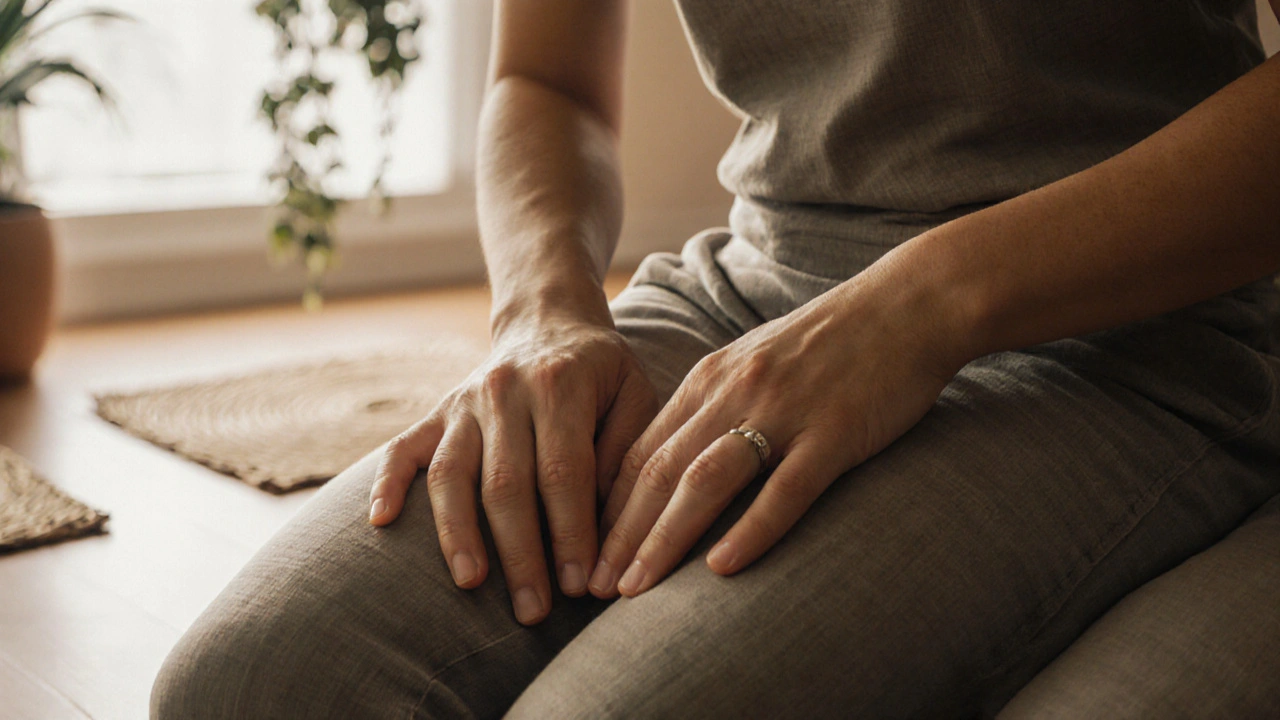
Where to Find Authentic Thai Massage
Not all “Thai massage” is created equal. Some places call it Thai massage but just do deep tissue with oils. True Thai massage is done on a mat on the floor, not a table. The therapist uses their whole body to apply pressure and guide movement. They wear loose clothes. You wear yours. Look for places that mention “traditional Thai massage” or “Nuad Boran.” Check reviews for phrases like “no oils,” “clothes on,” “stretching,” “felt like yoga.” Avoid places that use essential oils, hot stones, or music with heavy drums-that’s usually a mix of styles. In most cities, you’ll find authentic Thai massage in small studios run by Thai practitioners or schools trained in Thailand. Ask if the therapist was trained in Bangkok or Chiang Mai. Many trained at Wat Pho, the temple in Bangkok that’s considered the birthplace of Thai massage.What to Expect During Your First Session
You’ll arrive, asked to change into loose clothing if you haven’t already. The room is quiet, warm, and clean. No music. Just soft breathing. The therapist will start at your feet, then work up your legs, back, arms, neck, and head. They’ll press along your inner thighs, pull your arms like a pendulum, twist your torso gently, and stretch your spine. You might feel a little awkward at first-like you’re being moved like a puppet. But within minutes, your body relaxes into it. You might laugh. You might cry. You might fall asleep. All of it’s normal. The session lasts 60 to 90 minutes. Afterward, you’ll feel heavy-like you’ve been reset. You’ll want to sit quietly. Drink water. Move slowly. Don’t rush back into your day.How Much Does It Cost?
In most cities, a 60-minute session runs between $60 and $90. Ninety-minute sessions are $90-$130. Prices vary by location, but if you’re paying under $50, ask if they’re certified. Cheap doesn’t mean better here. Some studios offer gift certificates. Others let you book online. A few even offer home visits-perfect if your loved one hates leaving the house. Pro tip: Book the session for a weekday morning. Weekends are packed. A quiet Tuesday at 10 a.m. is the sweet spot.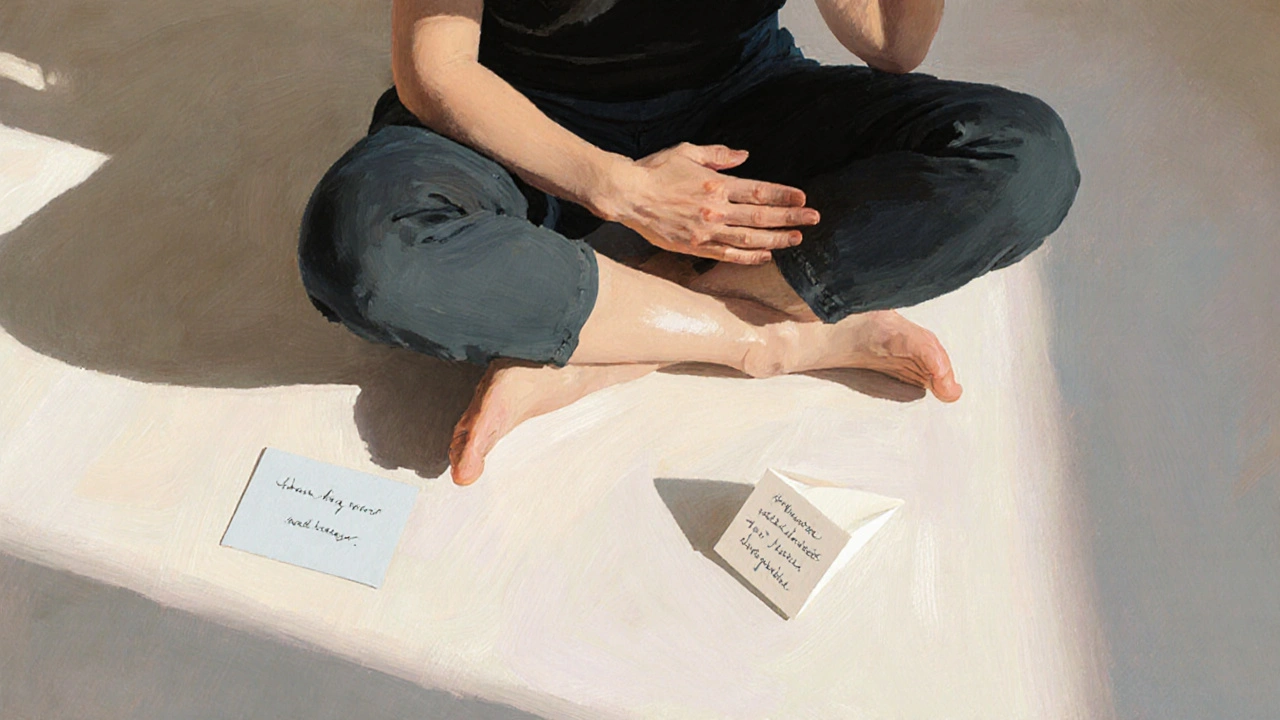
Thai Massage vs. Swedish Massage
| Feature | Thai Massage | Swedish Massage |
|---|---|---|
| Setting | Mat on floor | Massage table |
| Clothing | Worn (loose, comfortable) | Undressed (under sheet) |
| Technique | Pressure + assisted stretching | Long strokes, kneading |
| Oil Used | No | Yes |
| Focus | Energy lines, flexibility, alignment | Relaxation, muscle tension |
| After Effects | Deep release, improved mobility | Temporary calm, surface relaxation |
Who Should Avoid Thai Massage?
It’s safe for most people. But if someone has:- Recent fractures or severe osteoporosis
- Deep vein thrombosis (blood clots)
- Severe arthritis with joint instability
- Active infections or open wounds
Frequently Asked Questions
Is Thai massage painful?
It can feel intense, but it shouldn’t hurt. A good therapist will check in with you. If something feels too much, say so. The pressure should feel like a deep release, not sharp pain. Think of it like a good stretch-you might grunt, but you won’t scream.
Can I give Thai massage as a gift if my loved one has never tried it?
Absolutely. First-timers often say they were nervous, then surprised by how relaxing it was. The therapist guides the whole process. No experience needed. Just an open mind and willingness to breathe.
How often should someone get Thai massage?
For maintenance, once a month is ideal. If someone has chronic pain or high stress, once every two weeks helps. But even one session can reset your nervous system. You don’t need to do it often to feel the difference.
Do I need to do anything before or after the massage?
Avoid heavy meals right before. Drink water afterward to help flush out toxins. Don’t jump into a workout or a stressful meeting right after. Give yourself an hour to just be. The effects build over the next 24-48 hours.
Is Thai massage only for people who are stressed?
Not at all. Athletes use it to improve flexibility. Office workers use it to fix posture. Seniors use it to stay mobile. Even people who feel fine benefit-it’s like a tune-up for your body’s systems. It’s not just for crisis. It’s for prevention.
Ready to Give the Gift of Stillness?
You don’t need to spend thousands to show someone you care. You just need to give them space-space to breathe, to release, to remember what it feels like to be truly held. Thai massage isn’t just a treatment. It’s a quiet act of love. A way to say, “I see you. I’m here. You matter.” Book a session. Wrap it in a card. Let them open it on a day they need it most. They’ll remember it forever.Discover authentic Thai massage in modern London-how it works, where to find it, what to expect, and why it’s one of the most effective ways to release deep tension and restore balance.
Discover the real experience of Thai massage in London-how it works, where to find authentic sessions, pricing, benefits, and what to expect. No fluff, just clear, practical info for first-timers and regulars.

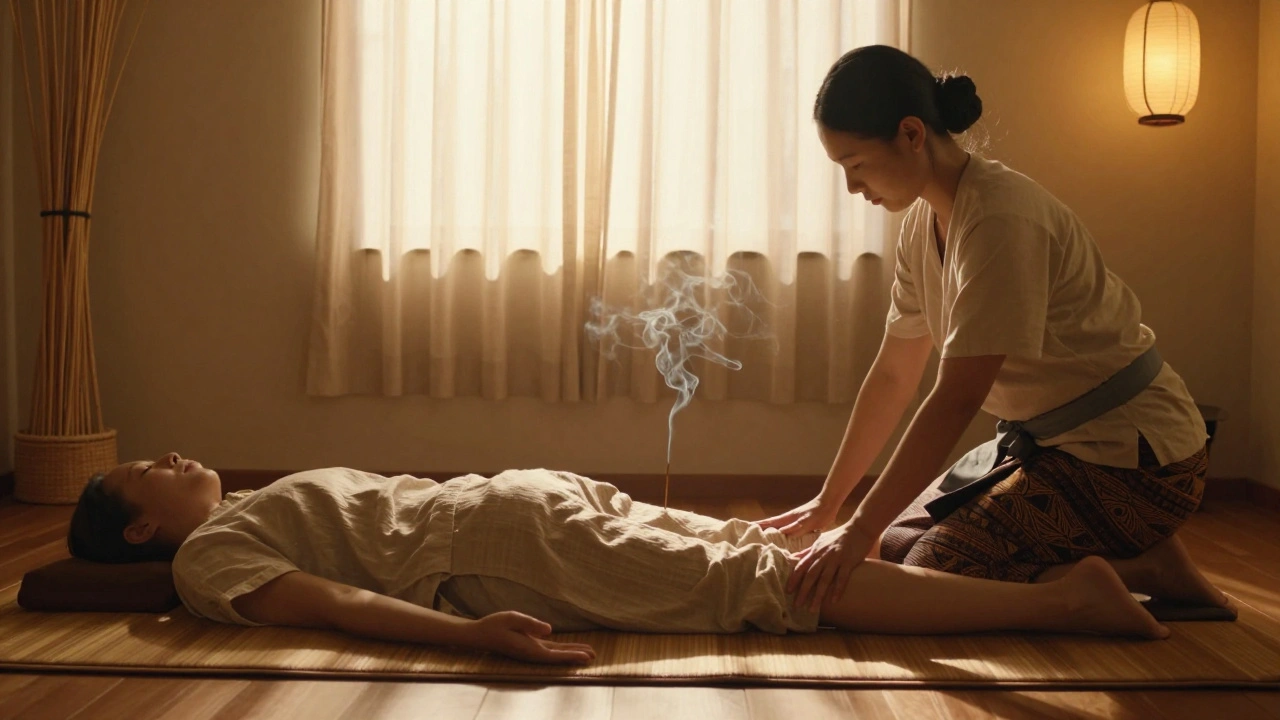
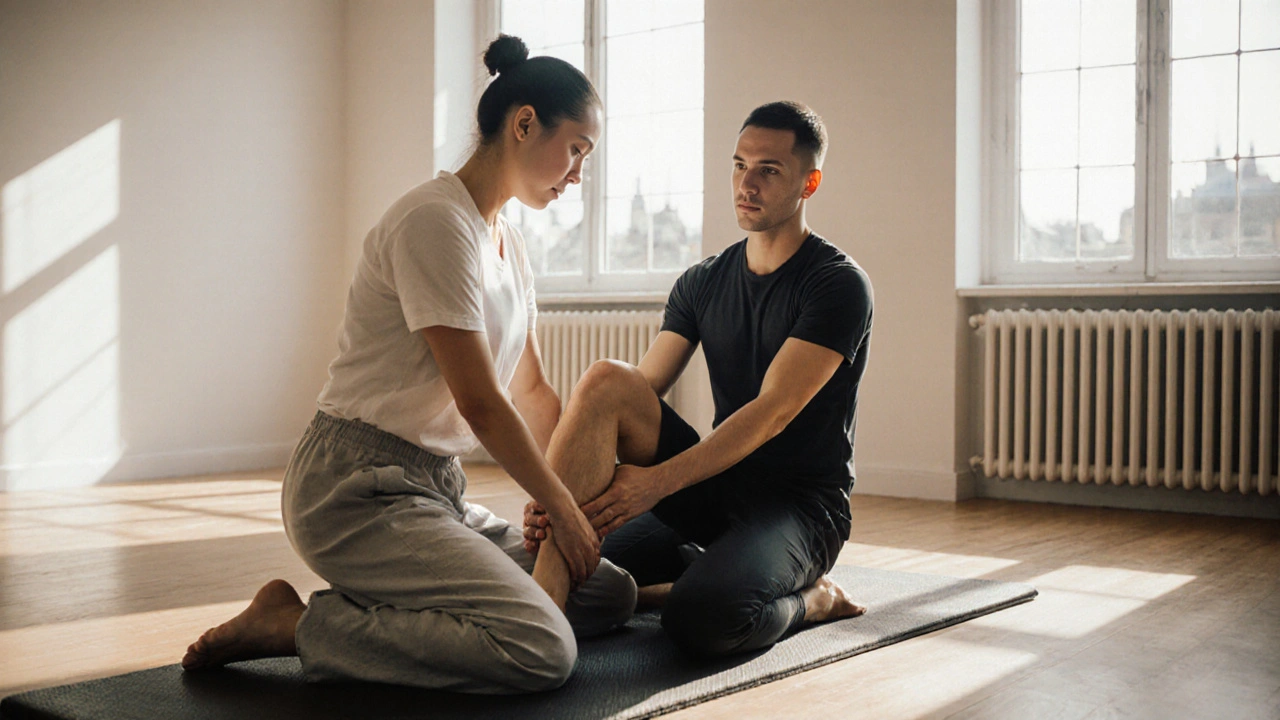
Jess Williams
November 2, 2025 AT 07:06There’s something sacred about giving someone the gift of stillness, isn’t there?
We live in a world that rewards noise-notifications, deadlines, performative busyness-but Thai massage? It’s the opposite. It’s silence made physical.
I’ve had two sessions-both in small studios tucked behind laundromats in Portland-and I still remember the way my jaw unlocked, like a rusted hinge finally oiled.
It’s not about relaxation, really. It’s about reclamation.
You’re not being massaged-you’re being reminded that your body is not a machine to be fixed, but a home to be inhabited.
And that’s rare.
Most gifts say, “I bought this for you.”
This says, “I see you-and I want you to feel safe inside your own skin.”
I gave this to my sister after her divorce.
She cried during the session.
She didn’t tell me why.
But she sent me a photo of her bare feet on the porch the next morning.
No caption.
Just sunlight.
That’s all I needed to know.
Stephanie Suttle
November 3, 2025 AT 15:52OH MY GOSH I JUST CRIED READING THIS!!!
THAI MASSAGE ISN’T JUST A TREATMENT-IT’S A REVELATION!!!
I’M NOT EVEN KIDDING-I WENT ONCE AFTER MY DAD DIED AND I FELT LIKE MY SOUL HAD BEEN GENTLY PLACED BACK INTO MY BODY!!!
THE THERAPIST USED HER FOOT TO PRESS MY HIPS AND I SCREAMED-BUT IT WAS A GOOD SCREAM!!!
AND THEN I FELL ASLEEP AND DREAMT I WAS A LEAF FLOATING ON A RIVER!!!
THIS IS THE MOST BEAUTIFUL THING I’VE EVER READ!!!
IF YOU DON’T GIVE THIS GIFT, YOU’RE NOT REALLY LOVING PEOPLE!!!
BUY IT. NOW. BEFORE YOU REGRET IT!!!
Charles Mitchell
November 4, 2025 AT 11:51Real talk: I used to think Thai massage was just yoga with extra pushing.
Then my mom got sick, and I booked her a session-not because I thought it would help, but because I didn’t know what else to do.
She came back quiet.
Not tired.
Just… lighter.
Turns out, she’d been holding her breath for 20 years.
That’s the thing no one tells you: this isn’t about muscles.
It’s about the places you forget you’re holding tension.
The jaw you clench while scrolling.
The shoulders you raise when you’re scared.
The spine you curve when you’re pretending you’re okay.
A good Thai therapist doesn’t fix you.
They help you remember how to unclench.
And yeah, it’s expensive.
But so is therapy.
And this? This feels like therapy your body actually wants.
Abagail Lofgren
November 5, 2025 AT 02:43While the emotional framing of Thai massage as a gift is compelling, I would caution against conflating cultural tradition with commercialized wellness trends.
Thai massage, or Nuad Boran, originates from a lineage of Buddhist healing practices deeply rooted in Thai monastic tradition.
Its efficacy is supported by clinical studies on cortisol reduction and flexibility, as cited.
However, the commodification of this practice-as evidenced by the proliferation of ‘Thai-inspired’ spa treatments using oils, music, and heated stones-risks diluting its authenticity.
When selecting a provider, verifying training at Wat Pho or through recognized Thai institutions remains essential.
Gift-giving, in this context, should honor cultural integrity as much as personal intention.
One might consider pairing the gift with a small book on Thai healing philosophy, to deepen the recipient’s understanding.
rafael marcus
November 5, 2025 AT 04:54Y’ALL. I gave my best friend this for her 40th birthday.
She thought I was crazy.
She said, ‘I don’t need to be stretched like a pretzel.’
She showed up late.
She wore yoga pants and a hoodie.
She didn’t smile once until the therapist gently pulled her arms overhead-and then she started crying.
Not sad crying.
Like… the kind where your whole body exhales for the first time in years.
She texted me at 2 a.m.: ‘I didn’t know my ribs could feel that free.’
Now she goes every month.
And she bought her mom one for Christmas.
And her mom gave it to her brother.
And now we’re all just… softer.
It’s not magic.
It’s just… human.
And sometimes, that’s enough.
Michelle Zhong
November 6, 2025 AT 02:22There’s a quiet poetry in the way Thai massage undoes the armor we wear without realizing it.
We spend our lives building walls-out of productivity, out of politeness, out of fear that if we let go, we’ll fall apart.
But the therapist? They don’t ask you to explain.
They just press.
And somewhere between the compression of your inner thighs and the slow arc of your spine, you remember you’re not broken.
You’re just tired.
And maybe, just maybe, you’ve been waiting your whole life for someone to hold you without trying to fix you.
That’s what this gift is.
Not a service.
But a sanctuary.
And the most radical act of love isn’t the flowers or the chocolates.
It’s the silence you offer when someone finally stops pretending they’re okay.
Kim Kemper
November 6, 2025 AT 23:24Just got back from my first session. 🌿
Went in thinking I’d hate it.
Left feeling like I’d been hugged by the universe.
My hips haven’t felt that loose since I was 18.
And I cried. Not because I was sad.
Because I realized I hadn’t breathed deeply in years.
My therapist didn’t say a word.
Just smiled when I opened my eyes.
Best. Gift. Ever.
PS: Book a Tuesday. 10 a.m. is magic. 🙏
Yzak victor
November 7, 2025 AT 08:04Minor correction: The article claims Thai massage reduces cortisol by up to 30%. That figure comes from a 2015 RCT with n=32, not a meta-analysis. The effect size was significant (p<0.01), but replication studies show variability.
Also, the table misrepresents Swedish massage.
Swedish isn’t just ‘surface relaxation’-it increases parasympathetic tone and reduces heart rate variability, which is clinically relevant for chronic stress.
And while Thai massage uses no oil, that’s not because it’s ‘more authentic’-it’s because oil interferes with the friction-based stretching technique.
Don’t confuse tradition with marketing.
Both styles are valid.
But don’t let emotional language replace evidence.
Kiara F
November 8, 2025 AT 04:17This is the most ridiculous thing I’ve ever read.
You’re telling people to spend $100 on a stranger touching them?
What’s next? Paying someone to whisper affirmations while you lie on the floor?
People these days are so disconnected from reality.
Why not just go for a walk? Or call a friend? Or meditate?
There’s no magic here.
Just people selling expensive touch therapy to the emotionally vulnerable.
And you’re encouraging it.
Pathetic.
Charles Mitchell
November 8, 2025 AT 11:26Hey, I get where you’re coming from.
But not everyone has the time-or the mental space-for a walk or meditation.
Some people are too exhausted to even think about ‘just breathing.’
Thai massage isn’t a replacement for self-care.
It’s a bridge.
For someone drowning in burnout, a 90-minute session can be the first time they’ve felt safe enough to let go.
That’s not weakness.
That’s survival.
And if someone needs a stranger’s hands to remember they’re human?
That’s not pathetic.
That’s beautiful.